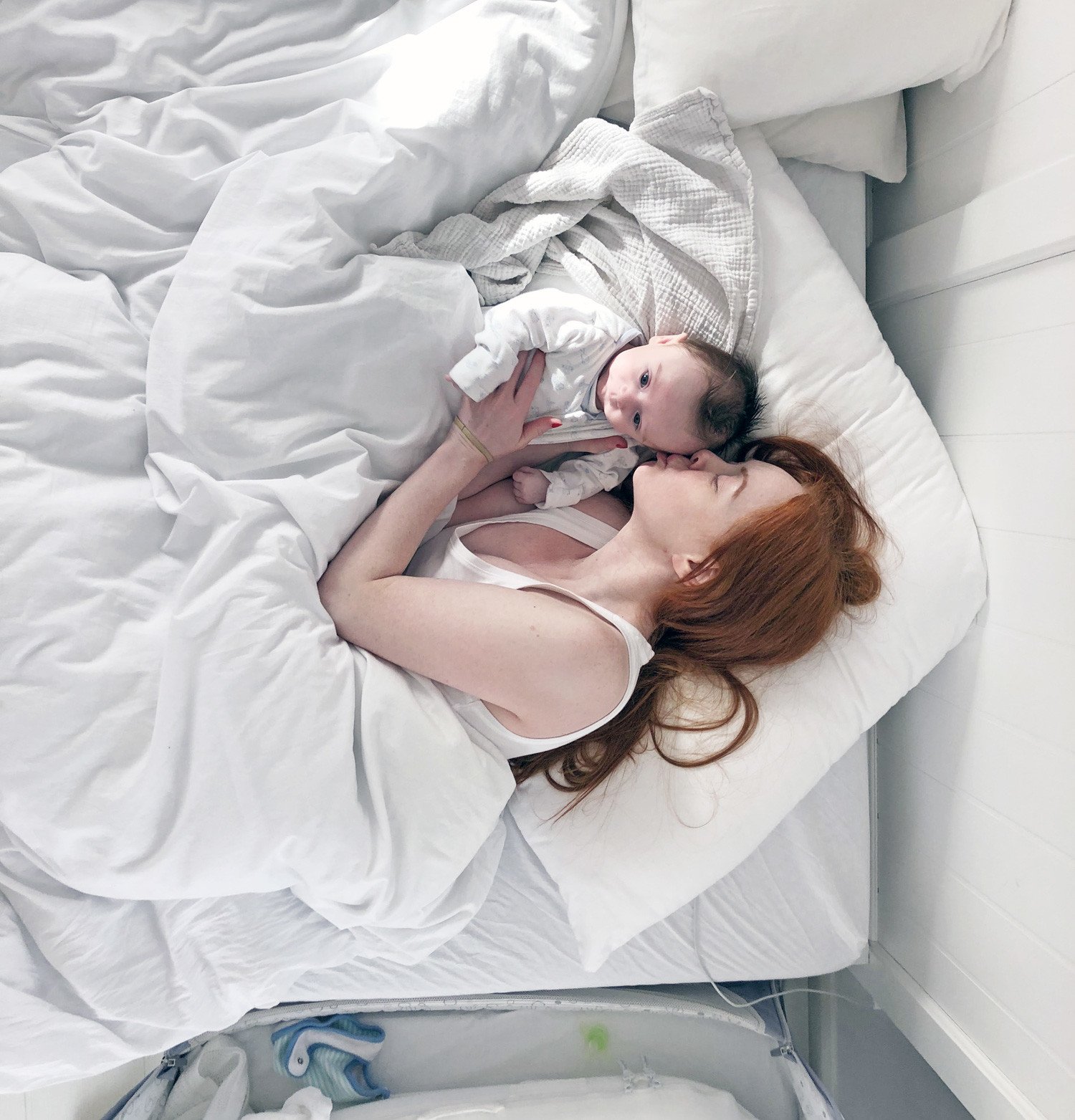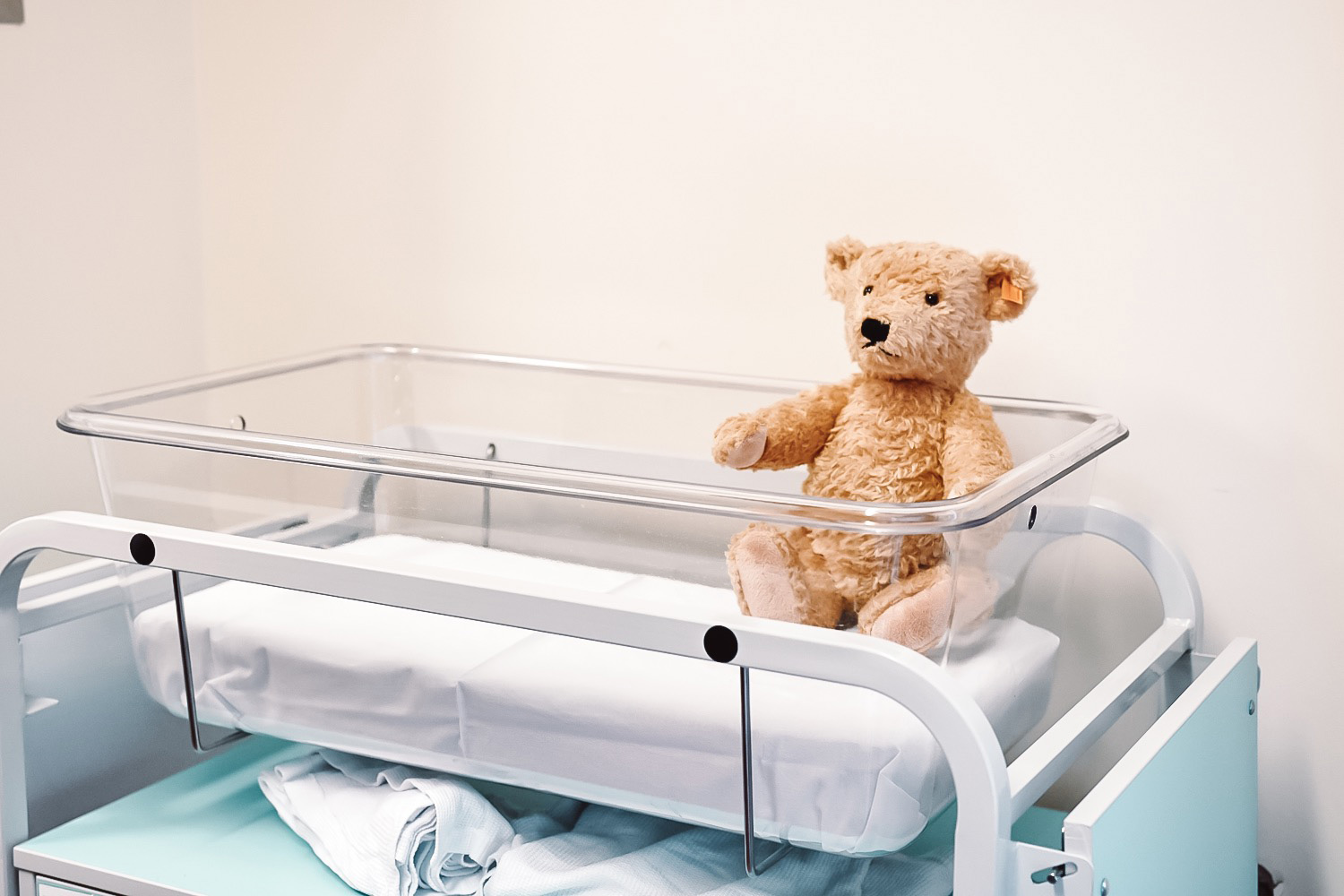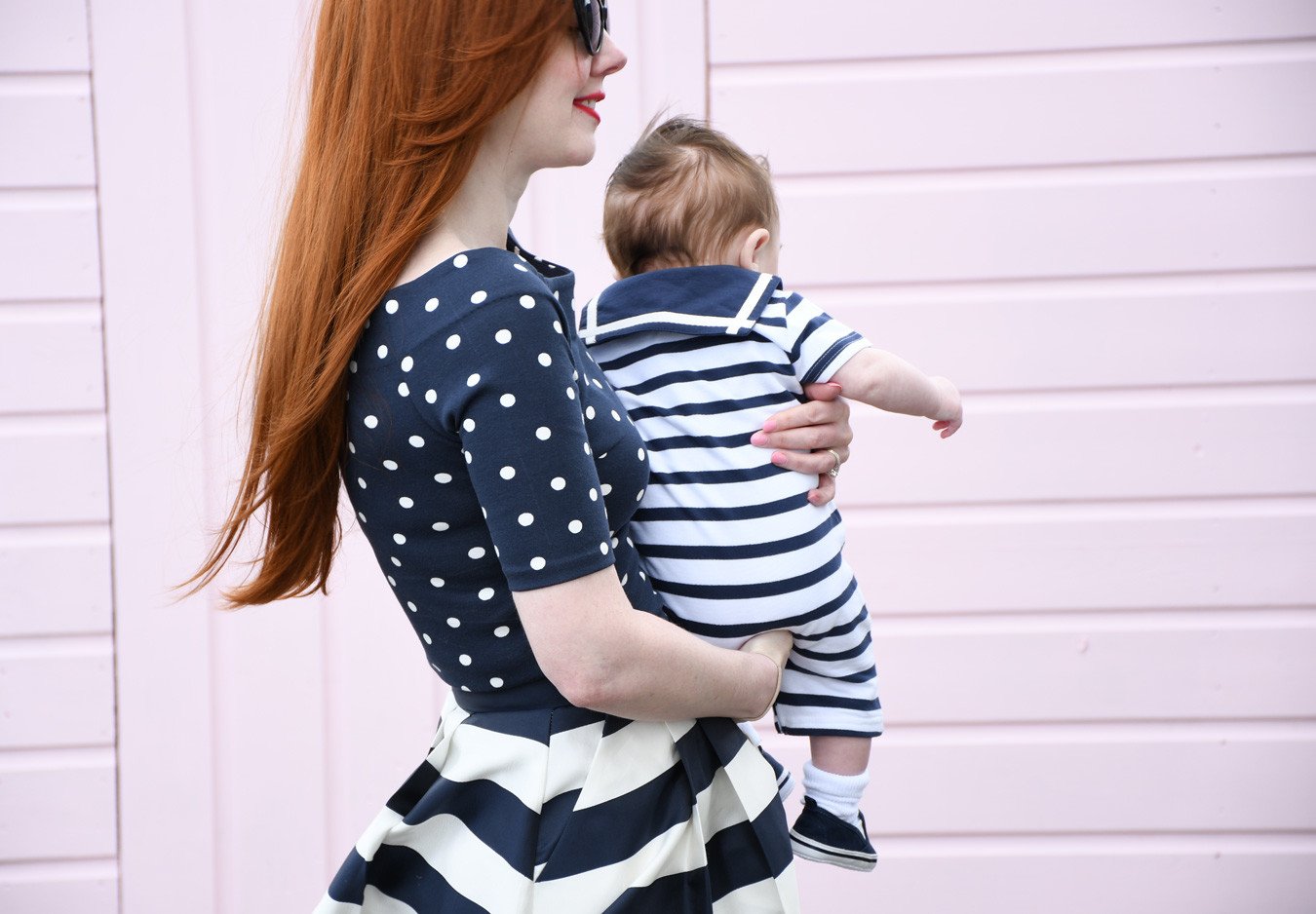My C-Section Recovery Tips
A few days ago, it came to my attention that quite a few people arrive at this site looking for c-section recovery tips.
Which is odd, really, because, er, I haven’t actually written any until now. Whoops. I mean, I did write a post about my own recovery 4 weeks in, but that was less advice-based, and more of an excuse for me to whine a lot about the hideous surgical stockings I had to wear, so… yeah. If it’s c-section recovery tips you want, however, it’s tips you will have, so here are some of mine – with the obvious disclaimer that I’m not a doctor: I’m just some woman on the internet who once had a c-section, and who meant to write this post about it, oooh, 13 months ago, maybe? So, let’s crack on, then, shall we?
But first!
Why I had an elective c-section
Hospital bag checklist: what to pack for an elective c-section
My C-Section Recovery, 4 weeks on
Postpartum Body Issues and How I’m Dealing With Them
[All of my posts on pregnancy & birth]
My C-Section Recovery Tips

My c-section recovery tips
01.
Sit up and move around as soon as the midwife tells you it’s OK
Before I had my c-section, I read all of the c-section recovery tips I could find, and the one that kept coming up again and again was to sit up and start moving around as soon as you’re given the all-clear by your doctor or midwife. “No problem,” thought the girl who’d never had surgery in her life up to that point. “As soon as this baby’s out, I’ll be doing laps around the hospital!” Oh, you sweet summer child.
When the midwives first came to try to get me out of bed it was several hours after the surgery: the spinal block had worn off, I was feeling super-nauseous, and, honestly, when they told me they wanted to help me sit up, I’d have burst out laughing if I hadn’t already figured out that the pain from that would probably kill me.
So I sent them away.
An hour later, though, they were back, and this time they weren’t taking no for an answer. I won’t lie: sitting up and swinging my legs out of the bed was incredibly painful, and it took both nurses present to help me do it. Once I was up, though, I felt so much better that I really wished I’d done it when they’d first suggested it. My nausea pretty much disappeared, and I just felt much more comfortable – and much more myself, strange as that might sound – sitting in the chair next to the bed than I had while lying down, so while you should obviously be cautious about this, and wait until you’re told it’s safe to get up, I do recommend trying to get moving as soon as you can. With that said, though…
02.
But don’t over-do it.
I have a fear of hospitals that’s bad enough that I had to have counselling in the months leading up to my c-section, and one of the things that helped me deal with those fears was the promise that, assuming all was well, I’d be allowed to leave hospital the day after the surgery. Fortunately for me, my c-section was very straightforward, and both Max and I were healthy, so I ended up being discharged just over 24 hours after he was born.
I, er, don’t particularly recommend this, needless to say.
I mean, it was the right choice for me, obviously: I don’t regret it, and I’d probably do it again, given the chance. (Yeah, I really, REALLY hate hospitals…) While it was certainly the best choice for my mental health, however, I realised very quickly that it probably wasn’t the best choice for my physical health: I insisted on walking out of the hospital (It was a long walk, so everyone told me to just use a damn wheelchair. It’s just occurred to me that I should have probably added the words, “And I’m also a complete idiot,” to my disclaimer, shouldn’t I?) and while I DID do it, I now have no idea why it was so important to me or, you know, what the hell I was thinking. Let’s just say it’s a miracle I didn’t throw up on the way home, and when I got there, I had to go straight to bed.
Don’t be me, people. (Unless you’re ALSO terrified of hospitals, in which case, crack on…) If you’re OK with the hospital stay, take advantage of the extra help you’ll get there, and, for the love of God, don’t over-do it.
03.
Set an alarm to remind you to take your painkillers
You will be sent home from hospital with painkillers. You will need to remember to take these, or – SHOCKER – they won’t make the slightest bit of difference. Now, I get that telling you to remember to take the painkillers sounds like a complete no-brainer, but here’s the thing: you just had a baby. If you’re anything like me, your head’s going to be all over the place, and so is your schedule: there will be times when you literally won’t even remember whether it’s day or night (Especially if you give birth in Scotland, in the middle of the winter, when you can’t even rely on the daylight to give you a bit of a clue), and. under those circumstances, it’s easy to forget things – even important things, like when to take your meds.
For me, the best solution was to just set an alarm on my phone, both for the painkillers themselves, and to remind me about the daily clexane injections I had to have to prevent blood clots. (This is standard procedure where we live, and I was sent home with a box of needles and medication which I had to inject every day. Or which Terry had to inject me with, rather – I’m not scared of needles, but I was totally unable to do this myself, so I had to get him to do it for me.) Until I did this, I’d only remember when the pain stepped in to remind me – and that’s not exactly the kind of reminder you want, it?
04.
Peppermint tea is your friend
Abdominal surgery causes gas. This gas can be just as painful as the aftermath of the surgery itself – trust one who knows (And one who spent the first night after her c-section feeling like the baby was still in there, and still kicking away, because the gas was so bad it was actually making her stomach move. Yes.) My midwife brought me a glass of peppermint water while I was still in hospital, and it helped so much that I ordered a box of peppermint tea as soon as I got home. It really does help, so stock up before your due date, and put some in your hospital bag – you can thank me later…
05.
As is a nice, comfy cushion
For me, getting up from a lying or seated position was the most painful part of my c-section recovery, and I also found it painful to laugh or cough for the first few days post-op. One of the things that helped with this was having something soft but firm to press against the incision: a cushion is perfect for this, so make sure you always have one to hand, especially when you’re getting up and down from the couch. I also continued to use my V-shaped pregnancy pillow for quite a few weeks post-partum: I found it gave me more support than a regular pillow would, and made it easier to lie on my side, which is my preferred sleeping position.
06.
Set up a baby changing / feeding station in your bedroom for the first few nights
My trusty cushion friend was all well and good on the couch, but getting out of bed was another story altogether – in fact, for the first couple of nights after Max was born, I couldn’t get out of bed AT ALL without help. The problem here, of course, is that newborns don’t care that you’re in pain and need to sleep: they need to be fed and changed throughout the night, so, unless you’re lucky enough to have round the clock help, you’re going to have to find some way to haul yourself in and out of bed.
(Once I got past the stage of needing Terry to grab my hands and literally pull me up off the mattress, I’d do this by rolling onto my side first, and then lowering my legs to the ground while pushing myself up. I think the only thing I really liked about being in hospital was the fact that I could raise and lower the bed to exactly the right height to get in and out of it!)
In my case, this was even more of a necessity than it would otherwise have been, because Terry got ill the week after Max was born, which meant that neither of us were able to get up and down the stairs very easily when Max needed something during the night. We solved this problem by bringing his changing mat, plus everything we’d need to feed and change him, up to our bedroom, along with a bunch of fresh sleepsuits. (For him, obviously, not for us…)
Our bedroom is on the 3rd floor of the house, with both the nursery and kitchen on different floors below it, so having everything on hand meant we didn’t have to keep going up and down the stairs for nappies, milk etc every time he woke up. It worked so well for us that we ended up ordering a second changing mat from Amazon and setting up a similar arrangement down in the kitchen, so that once we were up for the day, we could just stay downstairs, without having to constantly tackle the stairs – and trust me, after you’ve had abdominal surgery, the last thing you want to do is climb stairs all day long!
(If you’re formula feeding, I also recommend buying some of the ready-made bottles of formula to get you through the first few nights, at least, so you’re not having to go down to the kitchen to make up bottles.)
We kept this arrangement up for just over a week, after which we were both a bit more mobile, so we returned everything to the nursery/kitchen: it was really handy having it all close to the bed for the first week, but after that we’d just take it in turns to take Max downstairs when he woke up, so the person whose turn it was to sleep didn’t get disturbed.
07.
Consider buying an abdominal binder
I was sent a Belly Bandit abdominal binder and a set of c-section underwear when I was pregnant, for use post-partum. I wrote a full review of them both here, so I won’t repeat myself here other than to say that while it might sound counter-intuitive to want to put something tight around your mid-section when you’ve had surgery, I actually found it really comforting to know that everything was being “held in” and protected, so to speak.
With that said, although you can use these from just days after birth, I waited a couple of weeks to try mine, because at first I really couldn’t stand the thought of having anything pressing down on my scar (I haven’t bothered making this a separate point in my list of c-section recovery tips, because it seems too obvious, but loose, comfy clothes are key during this time…), but once I’d gotten in to them I loved them. I’m not sure how instrumental they were in helping me get back into shape afterwards, because Max is my only baby, so I’ve nothing to compare my experience to, but they did make it easier for me to laugh, cough and sneeze without worrying my scar was going to burst open, so I’d definitely get another set if I ever had another baby. (Which, spoiler alert: NO.)
*
And I think that’s it!





Tasha
Thank you for writing this! I had my C section yesterday and was discharged today, one of my main fears was the long recovery process, having a natural birth with my daughter this was so completely out of my comfort zone! I can definitely agree with the peppermint tea, I’ve had a cup at home this evening and the gas pains are better than they have been all day (personally, although they kept telling me too I found it hard to pass wind in the ward full of other mums!) At this early stage I can see not pushing yourself too hard is the way to go, letting your partner/ family help you and taking it easy when you need to makes such a difference!
Amber
Congratulations again! And yes, if you have someone who can help out, take full advantage of it!
Tasha
Thank you ?
Alice
I’ve never had a CS but I know for sure I would also have walked out and refused a wheelchair. I insisted on getting dressed by myself immediately after bilateral carpal tunnel surgery. And walked 2 miles home carrying my daughter after my vaginal delivery.
Amber
Ha, I’m glad someone understands! I was absolutely determined to do it, even although I was clutching a sick bag in one hand the whole time!
L
I have had three planned c-sections which all went well, after the first few days I had to remind myself that I had to take it easy. No heavy lifting of course. I would also recommend peppermint tea, it really works. And to keep things you need close, and comfortable clothes. So basically everything that you already mentioned. The first days I found it a bit scary to shower directly at the wound/scar, I worried that it would hurt. But of course I showered anyway and no it doesn’t hurt at all.